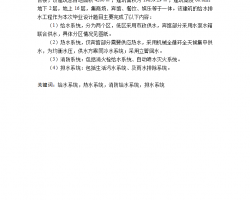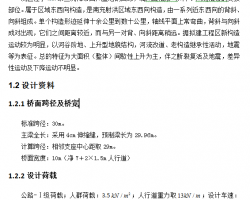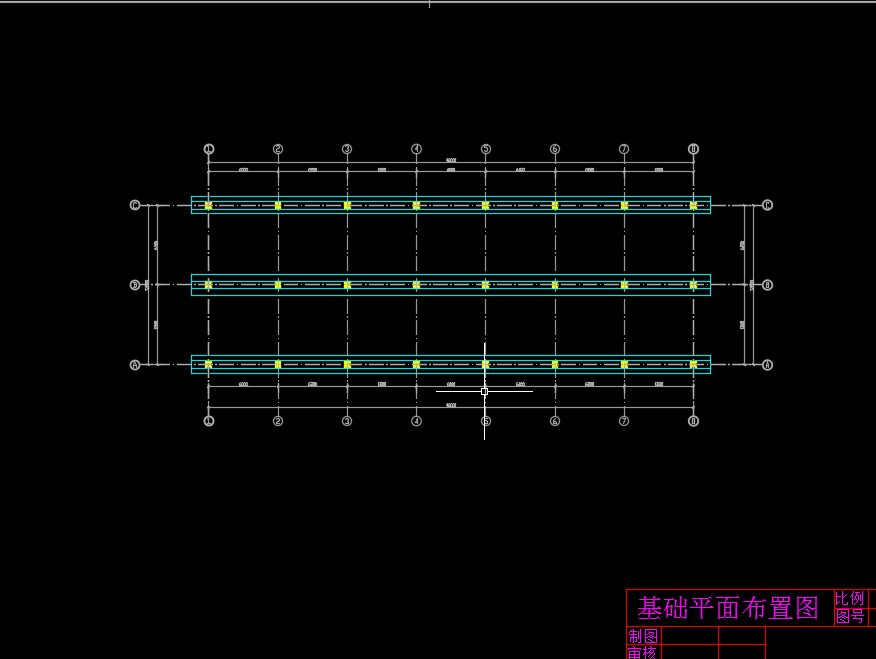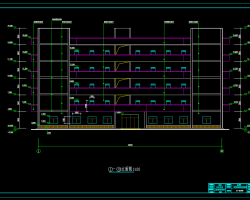摘 要 对电厂主蒸汽管道外表面温度超标现象进行分析,提出改造技术方案及施工工艺要求,介绍复合硅酸盐保温材料在蒸汽管道节能改造中的成功应用。
Pick to exceed the phenomenon of power plant main steam pipe outside surface temperature were analyzed, and put forward reform requirements, technical scheme and construction technology of composite silicate insulation materials in energy saving renovation the successful application of steam pipeline.
关键词 汽管道 保温节 能环保 应用
Keywords steam pipeline insulation section to environmental applications
一、改造前保温存在的问题电厂12MW 次高温次高压机组主蒸汽管道,原设计保温材料是硬质成型微孔硅酸钙,在运行中由于机组启、停时管道产生热位移,交变挤压;管道的轻微震动;长期高温使用等原因,造成硅酸钙碎裂粉化,形成很多裂缝,保温材料的热密封性能下降,蒸汽管道热能容易向外散发。同时保温材料塌陷出现空洞,特别是在水平管与垂直管段交接的弯头处出现脱节,保温效果很不理想,外表面温度平均55℃,局部温度高达150℃以上,散热损失较大。
The transformation before insulation, the problems existing in the power plant 12 mw time high temperature and high pressure main steam pipe unit, the original design is hard shaped microporous calcium silicate insulating material and in the operation of the thermal displacement due to pipe unit start-up and stopping time, alternating extrusion; Piping vibrations; Due to long-term use in high temperature calcium silicate cataclastic pulverization, forming many cracks, heat sealing performance of insulation materials, steam pipe heat to send out easily. Insulation failures appeared empty at the same time, especially in horizontal tube and vertical section disconnect at elbow, heat preservation effect is not very ideal, outside surface temperature of 55 ℃, an average local temperature as high as 150 ℃ above, heat loss is bigger.
按GB4272 - 92《设备及管道保温技术通则》,在设备或管道外表面采取保温措施后,其保温层外表面温度必须小于50℃的规定,外表面温度已经超标。因此,节能降耗工作成为需要解决的当务之急,同时管道的保温节能改造既是技术的需要,是企业管理的重要内容,也是节能降耗的重要途径,因此电厂于2005 年对1#、2# 机组主蒸汽管道进行了保温节能改造。
According to GB4272-92 "general principles for equipment and pipe heat preservation technology, the equipment or pipe outer surface heat preservation measures, the insulation must be smaller than the outer surface temperature of 50 ℃, outside surface temperature has been overweight. Therefore, become the priorities of energy conservation and consumption reduction, energy saving renovation is both at the same time, pipe insulation technology needs, is the important content of enterprise management, is also an important way to saving energy and reducing consumption, so the power plant in 2005 to 1 #, 2 # unit main steam pipeline insulation energy-saving reconstruction.
二、保温材料的选择
Second, selection of insulation materials
(一)保温材料性能对比成型微孔硅酸钙产品具有质地较硬、抗热震性、可塑性差,容易碎裂粉化、容重较高、材料规格种类多、材料管理工作量大等缺点。
(a) thermal insulation material performance comparison forming microporous calcium silicate products with a hard, poor thermal shock resistance and plasticity, shatter easily pulverization, high bulk density, material specifications, variety, materials management workload big shortcoming.
复合硅酸盐纤维板和复合硅酸盐膏产品具有质地柔软、密度低、导热系数小、优良的热稳定性及抗热震性、优良的抗拉强度、无腐蚀无污染、施工简便可塑性强、使用寿命长,受热膨胀小,外包铁皮不会有拉裂、凹凸等优点,其保温效果特别好。
Composite silicate fiberboard and composite silicate paste products with a soft, low density, low coefficient of thermal conductivity, excellent thermal stability and thermal shock resistance, good tensile strength, no corrosion, no pollution, easy construction of plasticity, long service life, small thermal expansion, outsourcing tin there would be no cracking, and the advantages of concave and convex, the heat preservation effect is very good.
(二)产品综合经济效益
(2) the product comprehensive economic benefits
复合硅酸盐纤维板和复合硅酸盐膏保温材料在相同工艺条件下,其使用厚度为硬质成型微孔硅酸钙保温材料的五分之三,可使管道外保护层用量相应减少18%,散热损失相应减少20%。无论是一次性投资,还是每年的散热损失费用等方面,均以使用复合硅酸盐纤维板和复合硅酸盐膏保温材料为最经济,且具有良好的综合经济效益。
Composite silicate fiberboard and composite silicate compound heat preservation material in the same process conditions, the thickness of its use for hard three 5 of forming microporous calcium silicate insulation material, can make the pipe outer protective layer usage reduced 18%, the corresponding heat loss decreased by 20%. Whether one-time investment, or a year of heat loss, etc., are to use composite silicate fiberboard and composite silicate paste heat preservation material is the most economical, and has good comprehensive economic benefits.
(三)保温材料的选择
(3) the thermal insulation material selection
通过以上对比,主蒸汽管道的保温材料采用复合硅酸盐纤维板和复合硅酸盐膏保温材料。
Through the above comparison, the main steam pipe of heat preservation material with composite silicate fiberboard and composite silicate paste thermal insulation material.
三、改造的施工技术方案及工艺要求(一)拆除从锅炉主蒸汽出口集箱至汽轮机高压缸范围内管道上的原保温结构,清除干净管道表面的灰尘和铁锈。
Three schemes, the transformation of the construction technology and technical requirements (1) removed from the outlet of the boiler main steam header to the steam turbine high pressure cylinder piping within the scope of the original heat preservation structure, clean up dust and rust on the surface of the pipe.
(二)使用复合硅酸盐膏保温材料直接在管道、阀门表面进行涂抹,形成厚度为20mm 的基础保温层。
(2) the use of composite silicate compound heat preservation material directly on the surface of pipes, valves, form the basis of a thickness of 20 mm insulation layer.
(三)在主蒸汽管道基础保温层上用细铁丝捆扎3 层复合硅酸盐纤维板,每层厚度为25mm,将它错缝粘贴,并用复合硅酸盐膏保温材料涂抹保温层的缝隙,保证其保温的密封性能。在第1、2、3 层复合硅酸盐纤维板外用细铁丝网整体捆扎、勒紧,防止保温层滑动、错位。外使用复合硅酸盐膏保温材料进行厚度为20mm 的密封涂抹,形成厚度为95mm 的主保温层。
(3) based on the main steam pipe insulation layer with fine wire strapping on the three layer compound silicate fiberboard, each layer thickness is 25 mm, will it be done paste, composite silicate paste insulation materials insulation daub and aperture, assure its insulation sealing performance. In 1, 2, 3 layer composite silicate fiberboard topical fine wire overall strapping and tighten, prevent the thermal insulation layer sliding and dislocation. Composite silicate paste is used outside heat preservation is 20 mm material thickness of sealing daub, form the main insulation layer thickness is 95 mm.
四)在主蒸汽管道主保温层上,用细铁丝捆扎一层复合硅酸盐纤维板,厚度为25mm,将它错缝粘贴,并用复合硅酸盐膏保温材料涂抹保温层的缝隙,保证其保温的密封性能。在第4 层复合硅酸盐纤维板外用细铁丝网整体捆扎、勒紧,防止保温层滑动、错位。外使用复合硅酸盐膏保温材料进行厚度为10mm 的密封涂抹,形成厚度为35mm 的加强保温层。
4) on the main steam pipe main insulation layer, with fine wire banding layer composite silicate fiberboard, thickness is 25 mm, will it be done paste, composite silicate paste insulation materials insulation daub and aperture, assure its insulation sealing performance. In the fourth layer composite silicate fiberboard topical fine wire overall strapping, tighten, prevent the thermal insulation layer sliding and dislocation. Outside using composite silicate compound heat preservation material thickness is 10 mm sealing daub, formation thickness for the strengthening of 35 mm.
(五) 主蒸汽管道保温层构成为基础保温层(20mm)、主保温层(95mm)和加强保温层(35mm), 总厚度为150mm。
(5) main steam pipeline insulation structure based on the thermal insulation layer (20 mm), the main insulation layer (95 mm), and strengthen the insulation layer (35 mm), the total thickness of 150 mm.
( 六) 最外层金属保护层的材料用0.8mm 铝皮封包, 相邻搭接不小于40mm,并在适当的位置留出自由膨胀余量。安装时,应紧贴保温层,环向接缝、纵向接缝和水平接缝必须上搭下,成顺水方向。弯头铝皮的外弧段另外增加一条宽度为50mm 的铝皮纵向连接,使弯头铝皮的环向、纵向都能连接成牢固的整体,不会产生脱节现象。
(6) the outermost layer of metal material with 0.8 mm aluminum skin packet, adjacent lap should not less than 40 mm, and in the proper place to set aside free expansion space. When installation, should be close to the thermal insulation layer, the link to the joints, longitudinal seams and horizontal seam must be on the set, as well. Bend aluminum skin outer segment and increase the width of a 50 mm aluminum skin longitudinal connection, so that the circular and longitudinal bend aluminum skin can connect into a solid whole, won't produce disconnectedness.
(七)施工后的保温层,不得覆盖设备的铭牌、仪表等。设备的名称、介质流向标识、色标及时按原样恢复。
(7) after construction of insulation layer, the nameplate shall not cover equipment, instrument, etc. The flow direction of medium equipment's name, logo, color standard in a timely manner as is restored.
四、改造后的效果及经济性分析
Four, the effect after transforming and economy analysis
(一)改造前后监测点的外表面温度对比将弯头作为监测点, 对其改造前、后弯头监测点处的外表面温度测温。实施了保温节能改造后,外表面温度完全符合GB4272 - 92 规定的标准,原超温点已经消除,平均温度下降22℃,保温效果得到了明显的提高。
(a) monitoring before and after the transformation of the outer surface temperature contrast will bend as monitoring points, the transformation before and after elbow outside surface temperature of the temperature monitoring. Thermal insulation implemented after modification, the surface temperature completely conform to the standards prescribed by the GB4272-92, the original overtemperature points have been eliminated, an average of 22 ℃ temperature drop, to improve the heat preservation effect obviously.
(二)改造前后的散热损失对比
(2) heat dissipation loss of contrast before and after the transformation
散热损失通常以热流密度q(W/m2)表示。散热损失与散热面积之乘积,就是该面积的散热量,所以散热面积内的散热损失表示了该区域的保温状况,该项指标是检验热力设备保温效果的主要指标1. 改造前散热损失:主蒸汽温度为550℃,平均外表面温度为T w 前= 55℃,按同一环境温度25℃计算:α 改造前为10.92W/(m2.k);q 改造前为327.6W/m2。
Heat loss is usually expressed as a heat flux q (W/m2). Heat loss and heat dissipation area of the product, it is the heat dissipating capacity of the area, so the heat loss of heat dissipation area according to the insulation condition of the region, the indicators are main indexes to examine the effects of thermal equipment insulation 1. Heat losses before modification: the main steam temperature is 550 ℃, the average surface temperature before for T w = 55 ℃, calculated on the same environment temperature 25 ℃ : alpha before modification is 10.92 w/(m2, k); Q is 327.6 W/m2 before modification.
可看出,改造前的散热损失已经超过标准值。
Can be seen that the heat loss before modification has exceeded standard values.
2. 改造后散热损失:
2. After transforming heat loss:
平均外表面温度为T w 后= 33℃,按同一环境温度25℃计算:α 改造后为9.82W/(m2.k);q 改造后为78.56W/m2。
After the average surface temperature is T w = 33 ℃, calculated on the same environment temperature 25 ℃ : alpha after transforming is 9.82 w/(m2, k); After reforming the q is 78.56 W/m2.
可以看出,改造后的散热损失比标准值降低。
It can be seen that after the transformation of the heat loss lower than the standard values.
(三)改造后的经济性分析
(3) after the transformation of the economic analysis
单位换热量的对比分析计算, 其中主蒸汽管道保温后外表面换热面积A=900m2。
Units in contrast analysis and calculation of heat, of which the main steam pipe insulation outside surface after heat exchange area A = 900 m2.
降低散热损失Δq = q 改造前-q改造后= 249.04W/m2, 降低率q % =76%,减少热流量损失ΔΦ =A Δq =224136 W。
To reduce heat loss Δ after reconstruction of q = q before - q = 249.04 W/m2, lower rate q % = 76%, reducing the loss of heat flow Δ Φ = A Δ q = 224136 W.
改造后1h 内减少散热量,即节能Q=ΔΦ×h = 806889.6kJ, 以机组年运行6000h,锅炉热效率η = 90%计算,运行1 年即可节约标准煤量B b =QbQη×h= 183540kg,燃煤单价按1000 元/t 计算,每年节约资金:183.54×1000 = 183540 元,取得了显著的经济效益。
Within 1 h after reconstruction to reduce heat, saving energy Q = Δ Φ x h = 806889.6 kJ, unit to run 6000 h, the boiler thermal efficiency eta = 90% computation, run one year can save amount of standard coal B = B QbQ eta x h = 183540 kg, coal-fired unit price calculated at 1000 yuan/t, save money each year: 183.54 x 1000 = 1000 yuan, has obtained the remarkable economic benefits.
四、结束语
Four, the conclusion
(一)通过对1#、2# 机组主蒸汽管道进行保温节能改造后,平均外表面温度由55℃下降至33℃,其能源利用率、环保性能都有较大的提高,减少了机组的散热损失及对环境的热污染。
(a) through 1 #, 2 # unit after the main steam pipeline insulation energy-saving renovation, the average surface temperature from 55 ℃ to 33 ℃, its energy efficiency, environmental performance has a larger increase, reduce the heat loss of the unit and the heat pollution to the environment.





